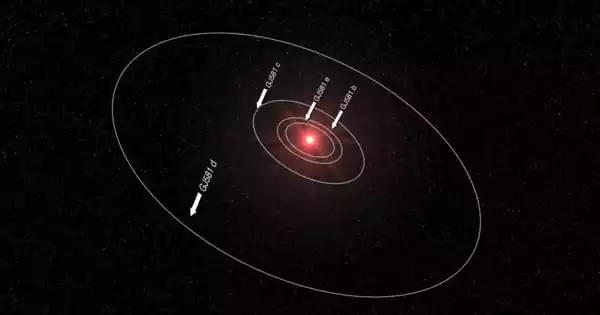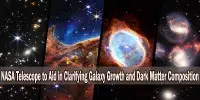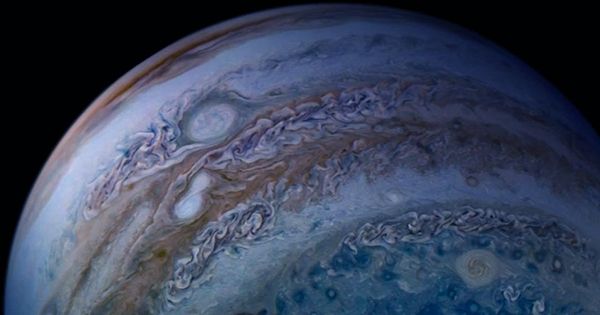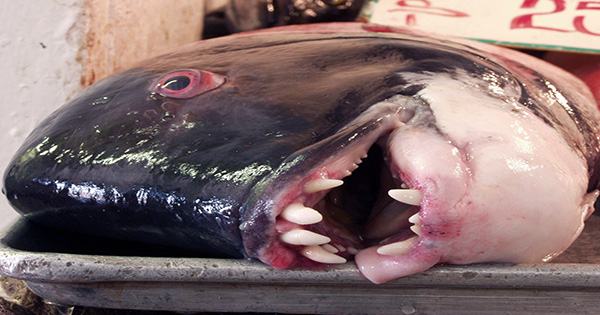Gliese 832 b is an extrasolar planet located around 16 light-years from our sun in the constellation of Grus, orbiting the red dwarf star Gliese 832. An exoplanet is a planet that circles a star other than the Sun. According to the most recent parallax readings, the star is 16.16 light-years or 4.95 parsecs away from Earth. It weighs around 206 Earth masses and orbits its star further than Earth orbits the Sun.
The planet’s orbital period, or year, is 3660 days or 10.03 Earth years. By the time the Earth has finished a full year, it will have completed 0.10 orbits around its star. The semi-major axis is the point in the orbit that is farthest from its star. The Earth revolves around the Sun with a semi-major axis of little over 1 A.U. This planet revolves in 3416 days at an orbital distance of 3.4 AU. 1 A.U. is the average distance between the Earth and the Sun. The planet orbits its star at a closer distance than Jupiter does the Sun.
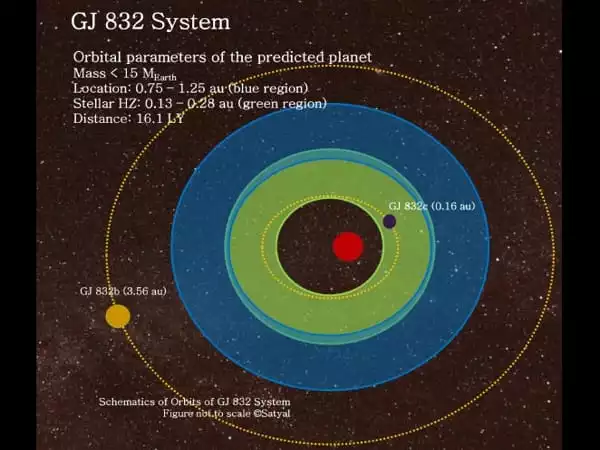
Orbit
At an orbital distance of 3.4 AU, the planet revolves in 3416 days; it is the longest-period Jupiter-like planet orbiting a red dwarf. At that distance, the brightness of the dim parent star equates to the brightness of the Sun from 80 AU (or 100 times brighter than a full Moon as seen from Earth).
For example, if the planet is one AU away from the star, it has a maximum mass of ten Earth masses and a produced radial velocity signal of 1.4 m/s. At the same location, a planet with roughly the same mass as the Earth would have a radial velocity signal of only 0.14 m/s, making it much smaller. In summary, the existence of this putative planet is supported by the system’s long-term orbital stability, orbital dynamics, and the examination of synthetic radial velocity signals.
The radial velocity approach was used to discover Gliese 832b and Gliese 832c, from which the orbital parameters were retrieved using best-fit solutions. These settings served as the starting point for their simulations.
Discovery
On September 1, 2008, the planet was detected in the Anglo-Australian Observatory.
Gliese 832 is a red dwarf with somewhat less than half the mass and radius of our sun. Gliese 832b, a huge Jupiter-like exoplanet, and Gliese 832c, a super-Earth mass planet, orbit the star. The gas giant, with a mass of 0.64 Jupiter masses, orbits the star at a distance of 3.53 AU, whereas the second planet is potentially a rocky world, roughly five times the mass of Earth, and orbits the star at a distance of 0.16 AU.
